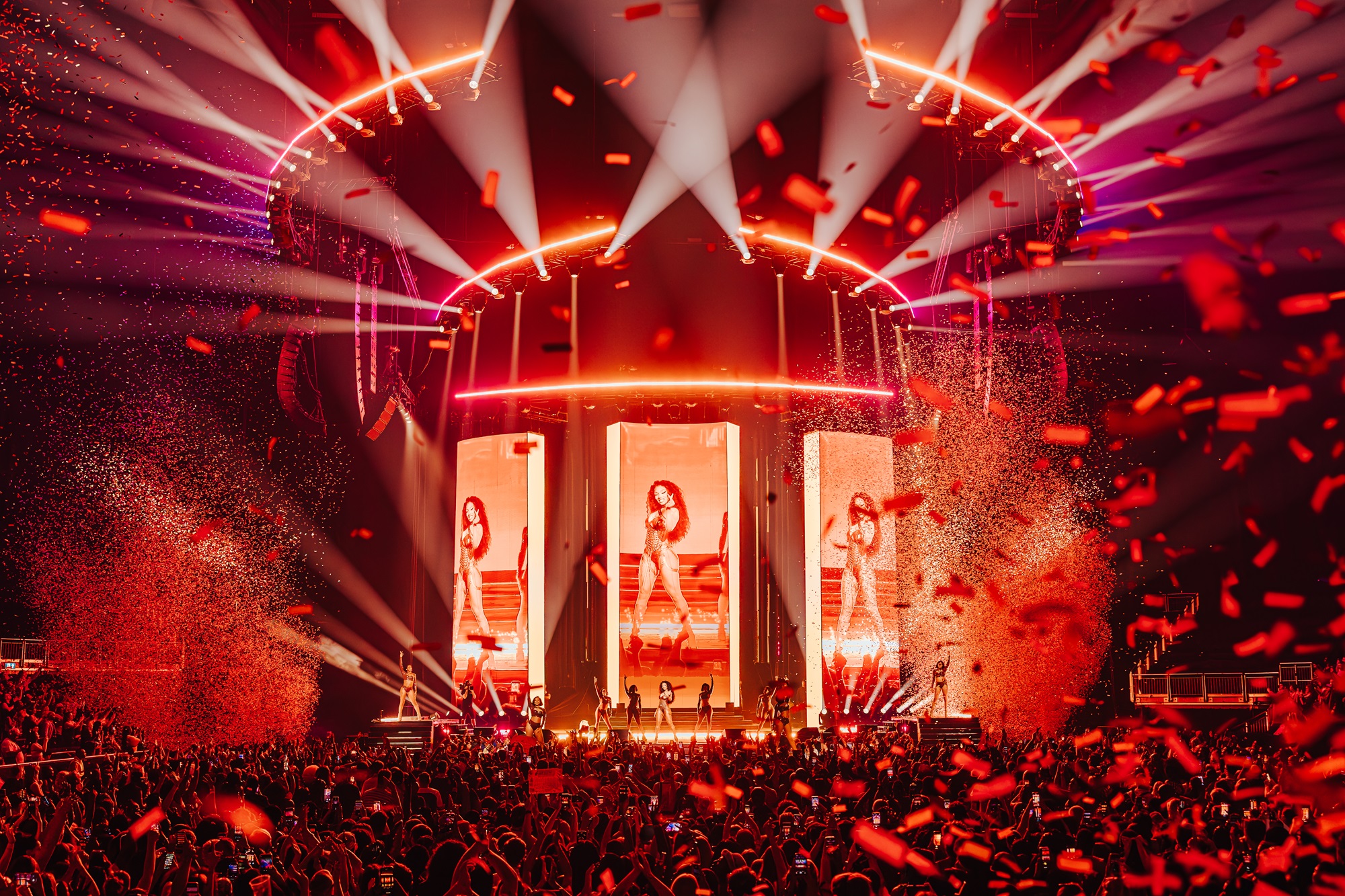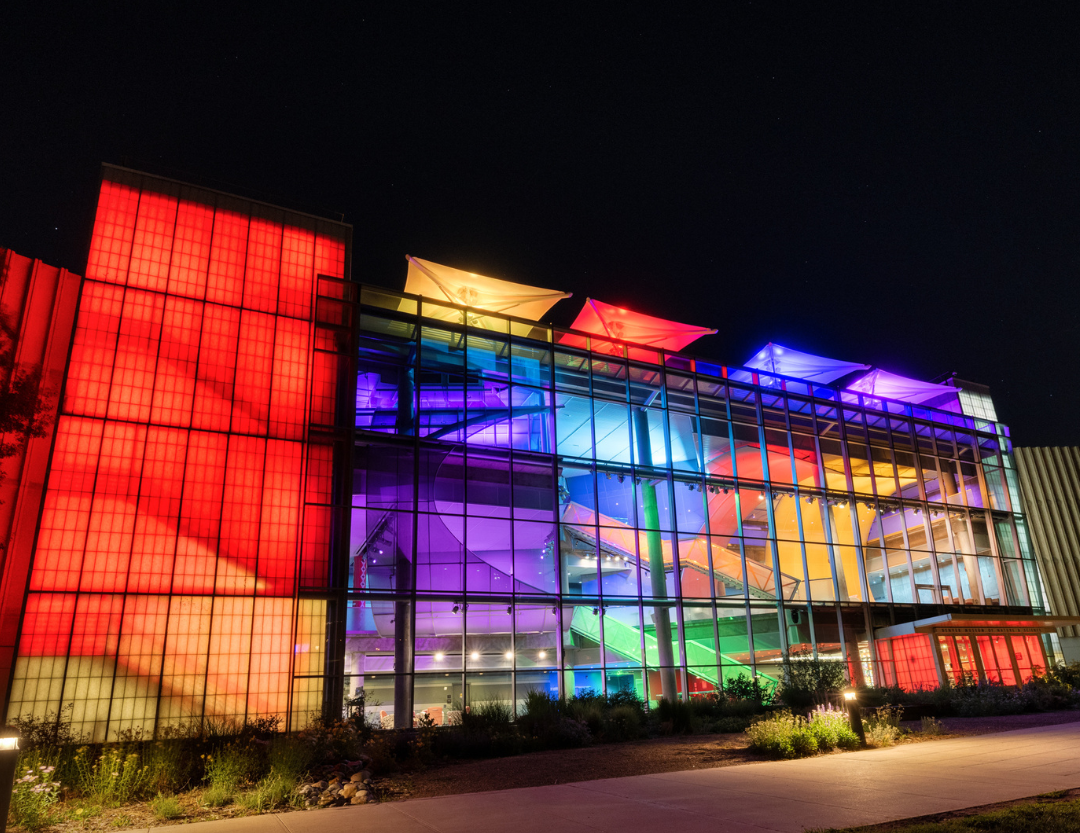ATLANTA — Lasers, moving lights and imagery from Brian Eno’s 77 Million Paintings archive aren’t the only elements adding visual interest to Coldplay’s Viva La Vida tour. (See “Wide Angle,” PLSN, Oct. 2008). A collaboration between LD Paul Normandale, XL Video and Pufferfish and others has resulted in internally projected spheres looming above the performers. Normandale told PLSN that the idea for the internally lit globes was influenced by Coldplay’s interest in an alternative to LED screens and side IMAG, and the idea emerged as a way of filling that visual void for a 320-degree show. The concept took about six months of development to reach fruition. Although side IMAG screens have since been added to the tour anyway, the globes still play a key visual role in the show.
XL Video, based in London, supplied the projection system, cameras, PPU, Catalyst and Hippotizer digital media servers and crew for the tour, and worked with Edinburgh-based Pufferfish to come up with the six spheres and steel cage housings used on the tour.
Justine Catterall produced the custom video playback content, with technical support from Richard Turner and live video directed by Andy Bramley. Des Fallon also played a role as international account handler and project manager for XL.
On tour, five of the two-meter-diameter globes are onstage. Three are attached to the two rear trusses — horizontal ladder beams shaped like waves — and the other two are positioned downstage left and right, at the sides of stage, flown on two more wave trusses. All these move in and out during the show on a fixed speed Kinesys automation system. The sixth globe, which is three meters in diameter, sits above the FOH mixer position.
Each day, the spheres are attached to the steel cages, which also hold the projectors pointing vertically downwards, plus all the inflation technology and fans. The onstage ones are fed by five Barco CLM R10 projectors and the FOH one by a Christie 20K, all fitted with specially made fisheye lenses.
Playback content for all the globes is supplied by three dual head output Hippotizers complete with a special plug-in to make the projections 360 degrees, bend the images and get them the right way up. At 1400 x 1050 pixels, it’s HD material in a slightly idiosyncratic format, working on multiple layers, putting the Hippos to the test. The Hippos sit backstage, with operator Ben Miles running them via Zoo Keeper remote software from his grandMA Lite console at FOH.
There is also a 60-foot-wide screen onstage at the back that is fed by four Barco FLM HD18s rigged on a center truss with a mix of Andy Bramley’s IMAG and pre-recorded footage stored on a Catalyst. This is covered by a curtain, which rises and descends throughout the show, depending on when the screen is being used.
The pre-cut camera images are sent from Bramley’s GV Kayak mixer to Miles at FOH to be output to the globes via the Catalyst. All the media servers are triggered via the grandMA Lite running on ArtNet protocol.
Two high level 21-foot-wide side screens with a 16 x 9 ratio were added to the ends of the stage left and right side trusses a couple of weeks into the European leg of the tour, along with another two Barco HD FLM projectors.
XL’s lead projectionist on the tour is Matt Vassallo, who runs out approximately 600 meters of fiber optic cable a day to the projectors and 1.2 Km of cable looms.
Andy Bramley is directing his second tour for Coldplay, and his mix is based on four cameras, two with long lenses stationed either side of the arena and two in the pit. He chose to have the units with long lenses at low height on the sides to create a real depth of field behind the artists, and also to produce a “sea of hands” effect, for which he also had the side stage thrusts reduced from six to four meters in height.
He mixes using a GV Kayak switcher with a Magic DVE that is used sparingly to enhance a couple of songs. They do a full camera shot record every night and also a DVD wide shot record from FOH.
Bramley basically had a clean slate brief. Working with input from Chris Martin, he came up with an alternative to the typical IMAG show, which strives to capture the band’s energy. “It takes a lot of effort to get it right, particularly with the images on the globes” he said, but when integrated with all the other visual elements, the globes help create a unique visual experience.
For more information, please visit www.xlvideo.tv.


